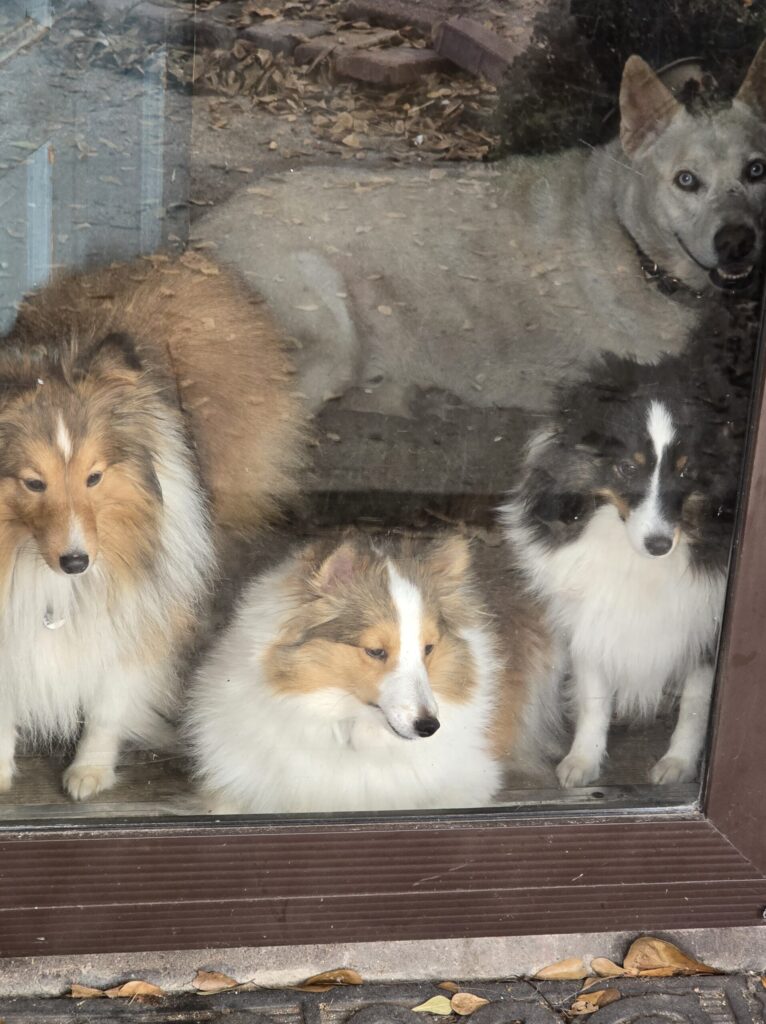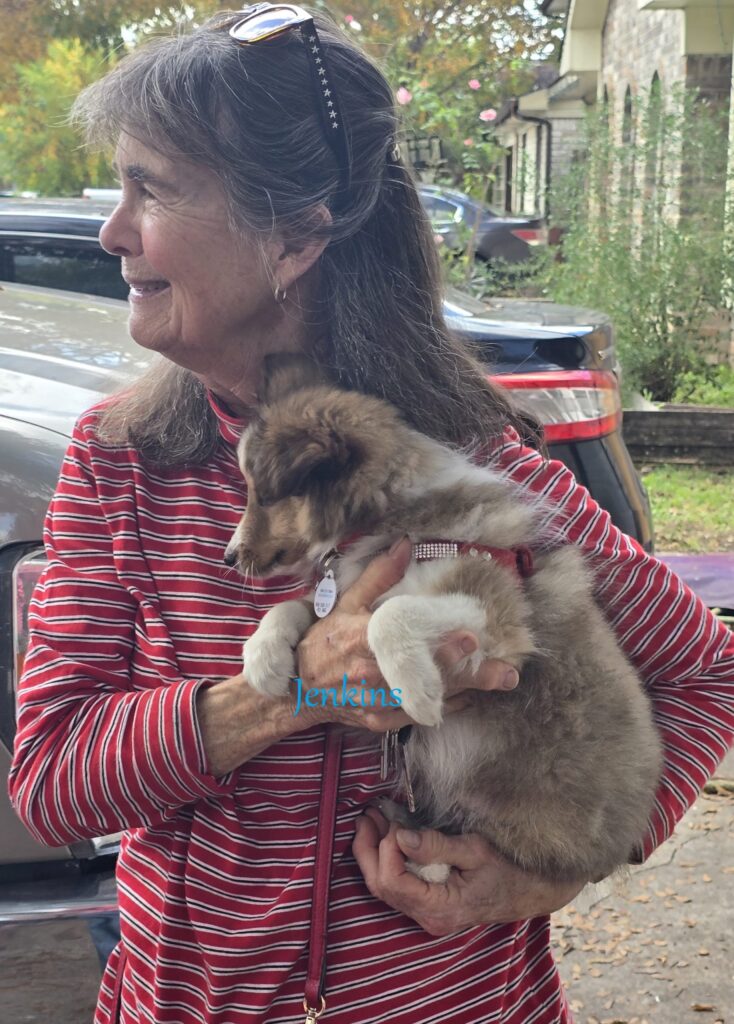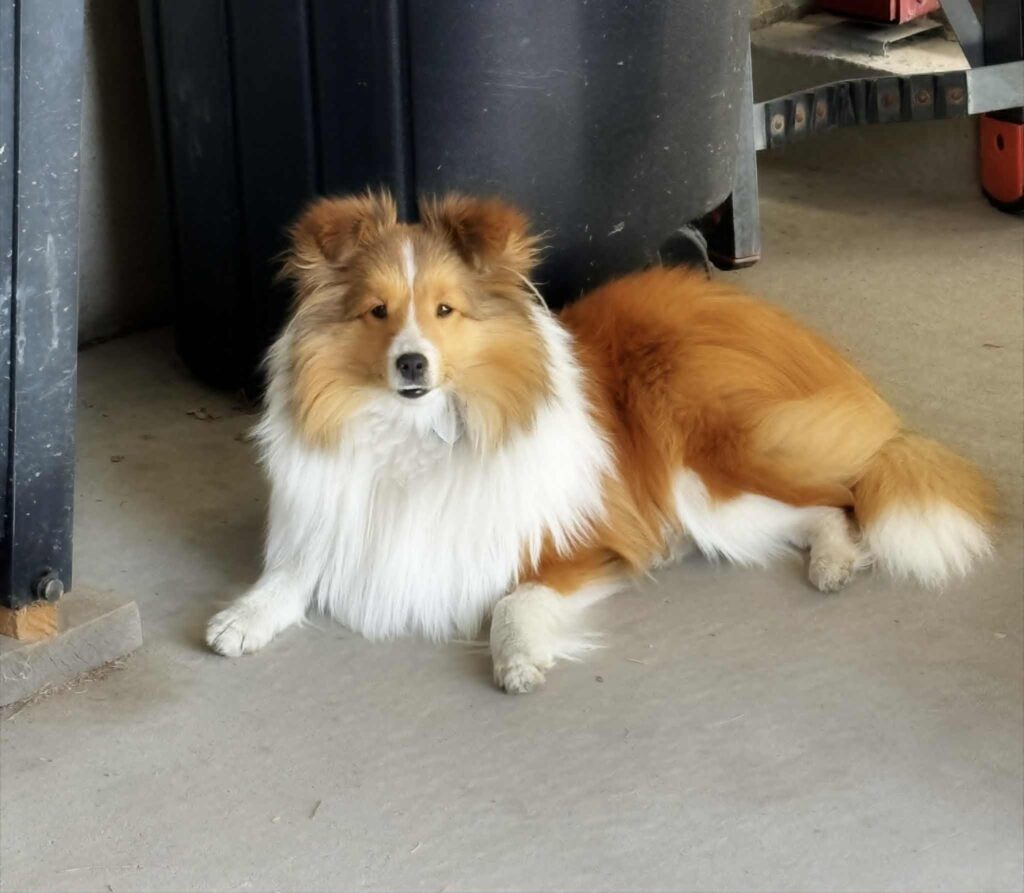
Services
Exquisite Toy Shelties for Loving Homes
Explore our specialized breeding services, dedicated to healthy, well-socialized Shetland Sheepdogs and family satisfaction.
Premium Puppy Placement
We match your family with the perfect toy sized Sheltie, ensuring a lifelong bond and happiness.

Health & Wellness Support
Ongoing care advice and health guidance to keep your toy sized Shetland Sheepdog thriving.

Puppy Socialization Training
Early socialization programs designed to nurture confident and friendly companions.

Caring for Our Toy Sheltie Family
Discover our passion for breeding charming, small Toy-Sized Shetland Sheepdogs.
Healthy, Tiny Companions
We prioritize health testing to ensure vibrant, long-lived toy Shelties.
Loving Temperaments
Each pup is raised with gentle care to develop friendly, sociable personalities.
Expert Breeding Standards
Our breeding program follows strict criteria for size, structure, and temperament.
Personalized Family Support
We offer guidance to families before and after bringing home their new friend.
Lifetime Commitment
Our dedication to each toy-sized sheltie extends well beyond adoption day. I appreciate lots of updates and pictures!
We also have a Facebook group “Kaizens Kids” that is just for parents of my puppies. No advertising or spam, just sharing stories and pictures of siblings and half siblings.
Puppy Raising Enrichment by Age Stage
Discover our passion for breeding charming, small toy-sized Shetland Sheepdogs.
Lifetime Commitment
Enrichment is essential for nurturing well-rounded, confident puppies, with the type of stimulation evolving as they grow. Here’s an overview by age stage:
Weeks 0-2 (Neonatal & Transitional):
- Focus: Gentle handling, warmth, and basic sensory stimulation.
- Enrichment:
- Early Neurological Stimulation (ENS): Brief, gentle exercises to stimulate the puppy’s neurological system
- Gentle Handling: Daily weighing and gentle stroking help puppies associate human touch with positive experiences.
- Sensory Stimulation: Introduce new sounds and textures by placing different items in the pen or using a damp towel.
Weeks 3-4 (Awareness & First Socialization):
- Focus: Ongoing sensory growth, acquiring social skills through interaction with littermates, and enhancing mobility.
- Enrichment: Introduction to different sounds, visuals, and moving objects. Controlled introduction to different textures, surfaces (carpeting, tile, wood), and household noises. “Follow me” games can encourage exploration. Spending solo time with people can build independence.
Weeks 4-12 (Socialization Period):
- Focus: This is a critical period for developing social skills and confidence. Puppies are highly receptive to new experiences.
- Enrichment: Exposure to a diverse range of environments, sounds, and individuals. Introduce people of different ages, sizes, and appearances. Introduce other animals (if appropriate and safe). Start basic positive reinforcement training, like name recognition, house training, and crate training. Introduce a variety of objects and toys for exploration and play. Puppies are introduced to the exercise wheel, tunnel, see-saw, stairs, cats, other dogs, chickens.
CONTINUE SOCIALIZING YOUR PUPPY
Socialization is essential because dogs must adapt to a variety of stimuli in today’s world. Many dogs live in urban environments with busy streets filled with cars, buses, and trucks passing by and honking from all directions. They encounter fast-moving objects like joggers, cyclists, and skateboarders, as well as unfamiliar stationary items such as garbage cans, statues, or inflatable holiday decorations. Strangers and children may approach your dog and want to pet them, sometimes without asking first. Additionally, many pet owners like to bring their dogs to outdoor cafés, pubs, or off-leash dog parks. Early exposure to these experiences helps your puppy feel confident and comfortable in similar situations later on.
During a puppy’s socialization period, pet parents focus on exposing the puppy to a wide variety of experiences. Puppies who have only experienced the limited environment of their home tend to be more fearful and anxious. Without proper socialization, these puppies are more likely to grow into anxious, fearful adult dogs prone to behavioral issues.
How To Socialize a Puppy
- Before taking your puppy outside to explore, ensure it is safe to do so. Avoid bringing your puppy to public places until it has completed its full vaccination schedule. This precaution helps protect your puppy from serious diseases such as parvovirus, leptospirosis, and kennel cough.
- If your puppy isn’t fully vaccinated, you can still keep them safe while socializing. One option is to set up a pop-up playpen near a busy public area, allowing your puppy to observe and engage safely without direct contact.
- Allow your puppy to socialize only with healthy, fully vaccinated dogs. Avoid letting your puppy walk on the ground in public places where dogs often visit, as this increases the risk of infection. Instead, use a stroller, sling, or carry your puppy to keep them safe.
Prepare Your Puppy
Before taking your puppy outside for socialization, ensure you have the essential supplies. These include:
- A treat pouch packed with an assortment of delicious, high-value dog treats
- A martingale collar and fitted harness
- A leash
- Fresh water and a portable water bowl
- Chew toys
- Poop bags
- Pet-friendly sanitary wipes for all essential cleanups
- Hand sanitizer available for everyone who wants to pet your puppy
- A pet carrier, body sling, or puppy stroller for when your baby gets tired
Provide Positive Reinforcement
The goal of puppy socialization is to help your puppy see the outside world as an exciting, positive, and enjoyable place. Make sure your puppy is having a great time by offering lots of praise, treats, and affection. If your puppy appears tired or scared, give them a gentle break to relax and feel safe.
Take It Slow With New Experiences
Puppies should be introduced to new objects and environments gradually. Start by allowing the puppy to observe from a comfortable distance where they can take in the sights without feeling stressed. Pay close attention to the puppy’s body language for signs of discomfort, such as:
- Pulled-back ears
- Looking away
- Shaking
- Lip-licking
- Vocalizations such as whining or whimpering
- If the puppy appears fearful or anxious, try moving them further away from the object. If the puppy’s ears are perked forward, they are focused on the object, wagging their tail, or moving toward it, you can gradually move closer to the new object.
- If the puppy becomes startled, promptly divert their attention to you or a toy. This helps minimize fear and prevents the puppy from forming a negative emotional association with the situation.
- Remember, your puppy doesn’t need to take in everything all at once, especially in a busy public setting. Even a brief exposure or simply moving your puppy a few steps closer to the target location can be enough for their initial experiences. Gradually build on these positive moments rather than rushing your pup.
Make Introductions to People
Encourage brief, positive interactions with both adults and children to help your puppy become comfortable and well-socialized. If you don’t know anyone with children, a great alternative is to bring your puppy to a local park. Find a spot near the playground and sit on a blanket where your puppy can safely observe and listen to children playing from a comfortable distance. This exposure helps your puppy get used to the sounds and sights of kids without feeling overwhelmed. It’s important to avoid letting others pick up your puppy during these early interactions, as being handled by strangers too soon may cause your puppy to feel scared or uncomfortable, which could hinder their socialization progress.
Enroll in Puppy Socialization Classes
Puppies can enroll in socialization classes once they have been wormed, tested negative for intestinal parasites, and received their first DHPP/DA2PP vaccination.
- During puppy socialization classes, puppies have the opportunity to meet and interact with other puppies of various breeds, ages, and sizes, as well as with people and children. Instructors guide the puppies in experiencing different surfaces to walk on, a variety of toys, and new objects like skateboards, wheelchairs, shopping carts, rolling suitcases, and bicycles. Puppies are also gradually exposed to common everyday sounds they are likely to encounter in their lives.
- Classes typically last four to six weeks and emphasize the fundamentals of positive reinforcement training. Ensure your instructor follows Fear Free training principles. Steer clear of classes that employ aversive techniques or tools, as punitive methods can heighten fear and anxiety and damage the bond between you and your pet.
- Many puppy socialization classes meet just once a week. The rest of the time, pet parents need to take the initiative to expose their puppies to new experiences. For those with limited time, enrolling in a second class can provide valuable extra opportunities for puppies to interact with new people and other dogs during their critical socialization window.
Create a Socialization Schedule
Socialize your puppy at least two to three times per week until they reach at least 6 months of age.
- Some pet parents invest significant time socializing their puppies during the first four months but then stop engaging in activities outside the home. However, without ongoing and consistent exposure, some puppies may regress or develop fearfulness when faced with new experiences as adults.
- Puppies should be consistently exposed to various situations throughout adolescence to help them become well-adjusted adult dogs. These experiences can include car rides, elevator trips, walking past groups of people, or hiking on trails.
Tips for Socializing a Puppy
- Take the puppy on brief walks throughout the day and evening, exploring various neighborhoods.
- Introduce the puppy to a variety of walking surfaces, including concrete, asphalt, grass, dirt, gravel, sand, and metal plates or grates.
- Walk your puppy in areas free from stray, sick, or unvaccinated dogs. Sunlight helps eliminate parvovirus, so walking your puppy on clean, dry pavement reduces the risk of infection. Consult your veterinarian for personalized advice.
- Avoid walking the puppy in areas contaminated with dog feces, like dog parks and beaches, until 2 weeks after they have received their final vaccine.
- Arrange playdates only with healthy, vaccinated dogs, or choose locations with no history of parvovirus infection, such as your own backyard.
- Take your puppy to local parks, but avoid letting them walk on the grass until they have completed all their vaccinations. Instead, allow your puppy to play in a pop up playpen or sit with you on a blanket placed on a park bench.
- Introduce your puppy to people of all ages, sizes, heights, and ethnicities.
- End the outing if the puppy seems distressed or unhappy. Negative experiences can harm the puppy’s mental well-being and behavioral growth.
